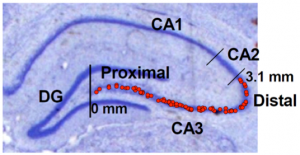Path integration and representations of space–time in the hippocampus
James Knierim
Krieger Mind/Brain Institute of Johns Hopkins University, USA
Path integration is an evolutionarily conserved navigation strategy across many species. In the rodent hippocampal formation, spatially selective firing patterns of place cells and grid cells have been modeled successfully with various computational implementations of path integration. These models are readily extendable to also represent distance and time. In support of these models, under various conditions, principal neurons of the hippocampal system display firing correlates of location, distance, or time. Path integration requires the regular use of landmarks to correct cumulative drift and/or prevent this drift from accumulating. Thus, a fundamental principle of these models is an interaction between self-motion inputs (which provide the moment-by-moment updating of the spatial representation) and external landmarks. It is hypothesized that this interaction is necessary to calibrate the gain of the path integrator, to ensure that the internal representation of the organism’s location matches its movement through the environment. Experiments in a virtual reality environment provide strong evidence that the path integration gain is a plastic variable that can be tuned through visual feedback.









You must be logged in to post a comment.